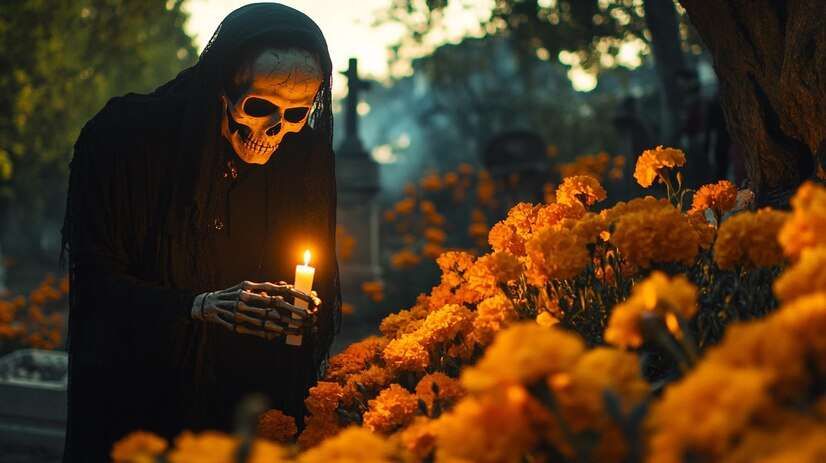In the realm of Round of Lofty positions, one of the most convincing viewpoints is the language known as Valyrian, particularly High Valyrian, which has caught the consideration of etymologists and fans alike. With regards to deciphering explicit terms, for example, “Messenger of death,” it becomes fundamental to dive into the profundities of the Valyrian language, uncovering its foundations, structure, and Grim Reaper representative significance. In this far reaching guide, we will investigate how to say “Messenger of death” in Valyrian and analyze its social importance inside the setting of the language.
Introduction to the Valyrian Language
Valyrian, a made up language, was created by etymologist David J. Peterson for the Round of Lofty positions series in view of the books by George R.R. Martin. Known for its intricacy, Valyrian is separated into numerous tongues, with High Valyrian being the most esteemed. It was the language verbally expressed by the Valyrian Freehold, an old human progress eminent for its dominance of mythical serpents and sorcery.
While the Valyrian Freehold fell hundreds of years before the occasions of Round of Privileged positions, its language was due in different structures. High Valyrian is in many cases seen as an academic or stylized language, while lingos like Astapori Valyrian are spoken by the normal people across Essos. Understanding this background is crucial when translating abstract concepts like “Grim Reaper.”
The Grim Reaper Concept
Before we jump into the etymological angle, understanding the idea of the Soul harvester is imperative. In different societies, the Soul harvester represents passing. Portrayed as a hooded figure employing a grass cutter, the Gatherer guides spirits to existence in the wake of death. While the Harvester of souls is a Western embodiment of death, different societies have their own gods or figures related to mortality.
In the Valyrian setting, passing is in many cases seen from the perspective of R’hllor, the Master of Light, and his everlasting battle against the Incomparable Other, a divine force of haziness. This dualistic view on life and passing could impact how one would convey the idea of the Harvester of souls in Valyrian, especially in its High Valyrian tongue.
Translating “Grim Reaper” into Valyrian
Deciphering explicit social ideas starting with one language then onto the next, particularly in a language as old and developed as High Valyrian, is a difficult undertaking. While the Valyrian vocabulary doesn’t have an immediate comparable for “Harvester of souls,” we can separate the term to track down a rough interpretation.
Breaking Down “Grim Reaper”
- Grim: Dreary: “troubling” infers a feeling of premonition, murkiness, and seriousness. In High Valyrian, haziness or something unfavorable could be addressed by “nūmāzma,” and that implies shadow or obscurity.
- Reaper: The Reaper is someone who harvests, specifically a harvester of souls in this context. Valyrian terms for harvesting or taking something could include “drēje” (to reap or harvest).
By combining these concepts, a possible translation of “Grim Reaper” in Valyrian could be “Nūmāzmi drējir”, which would literally mean “the harvester of shadows” or “the reaper of darkness.” This captures the essence of the Grim Reaper as a figure associated with death and darkness.
Cultural Significance in Valyrian Mythology
In Valyrian culture, passing was much of the time seen as an unavoidable piece of life, and the people who used control over life and demise, for example, the dragonlords, were held in high regard. The relationship of death with shadow and murkiness is fitting, particularly taking into account the Valyrian’s association with the Incomparable Other, who is much of the time thought about as the lord of death and cold.
While there is no immediate notice of a Soul harvester like figure in Valyrian folklore, figures like the Unremarkable Men of Braavos, who love the Many-Colored God, may serve a comparative capability. The Many-Colored God is a god of death, and his devotees trust that all demise is important for his arrangement. Thus, the idea of a Grim Reaper could align with the Valyrian perspective on the inevitability of death, making “Nūmāzmi drējir” a fitting term.
High Valyrian and Death-Related Terminology

Beyond just “Grim Reaper,” Valyrian has a rich vocabulary related to death and the afterlife. Understanding these words provides deeper insight into how the Valyrian people viewed mortality.
- Morghūlis: This is one of the most well-known Valyrian words, meaning “All men must die.” It underscores the inevitability of death in the Valyrian worldview.
- Dracarys: While this word directly translates to “dragonfire,” it’s often associated with death and destruction, as dragons were frequently used in warfare and executions.
- Vezof: This word means “to die,” showing the straightforward nature of how Valyrians might speak about death.
The connection between fire, dragons, and death in Valyrian culture suggests that their view of the afterlife may not align with the Western concept of the Grim Reaper, but rather with a more elemental force of destruction and rebirth.
Why “Grim Reaper” Resonates in the Valyrian Context
Integrating the idea of the Soul harvester into Valyrian checks out inside the bigger structure of the universe of Round of Privileged positions. Demise is a steady subject all through the series, from the passings of significant characters to the approaching danger of the White Walkers. Thus, interpreting “Soul harvester” into Valyrian permits us to investigate how various societies inside this universe view demise and its couriers.
By using the phrase “Nūmāzmi drējir”, we honor the ominous and foreboding nature of the Grim Reaper, while embedding it within the dark, shadowy world of Valyrian lore.
Conclusion
The Valyrian language, with its rich history and social profundity, gives a captivating focal point through which we can investigate the idea of the Harvester of souls. While there may not be an immediate interpretation, the expression “Nūmāzmi drējir” catches the pith of this figure as a harbinger of death, saturated with murkiness and secret.
As we look at the broader implications of death in Valyrian culture, it’s clear that the Grim Reaper, or “Nūmāzmi drējir”, fits seamlessly into the worldview of a people who revered power, fire, and the inevitable cycle of life and death.
Stay in touch to get more information on Tech Up Net! Thank you
